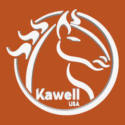Above Photo: Students at Jack Roth’s Oklahoma Horseshoeing School in Purcell, Okla., are encouraged to shoe horses with handmade shoes on a regular basis. Roth says this is one of the most important things students should learn while in shoeing school.
I have taught horseshoeing for 40 years to more students than anybody else ever has. Most of my graduates went on to shoe horses professionally and made a living for themselves and their families.
I have been acquainted with so many farrier teachers over the years and all of us have a somewhat different idea of what it means to teach horseshoeing. The following are my ideas of what you should learn at shoeing school.
1. Theory. You must learn theory of horseshoeing and the physical and anatomical principles involved in farriery. It is not complicated, but it is complex. It is not easy to learn, but it must be learned.
2. Consistency. Your progress should be monitored daily while you learn the basics. You need to learn to look for and achieve balance and appropriate angles. You should learn the shape of more or less “normal” horses’ hooves and see how that shape applies to the individual hoof that you are working on. If you learn to get the trim and shape right, then the nails almost drive themselves.
Learn to appraise your work not when it’s fresh, but rather 6 weeks later. Did the shoe stay on? Does the hoof still look like it has been freshly shod, but a 1/2 inch longer? Did the horse stay sound? If it was not sound when you started is it more sound now than it was before?
Learning theory of horseshoeing as well as anatomy is essential before you leave shoeing school.
Know the shape of a “normal” horse’s hoof and appraise your work against that shape 6 weeks after the shoeing or trimming.
Become a knowledgeable and competent horseman and be able to teach horsemanship to clients.
Learn to make and modify shoes at the forge.
3. Horsemanship. Farriers should be good horsemen and should teach horsemanship to their clients. The farrier is the only professional who examines that horse every month or so, and clients lean heavily on your expertise. You should learn to observe if the horse is too thin, too fat, has a glossy coat or a bright look in its eye. Does the horse move well? Is it dappled? You need to know how to get the horse to yield properly to the bridle and to pressure. You need to know the many aspects of horsemanship that the client needs to know as it applies to their horse.
You must be taught to train a horse. I have heard it said too often that the farrier should not be expected to train the horse. I disagree. The farrier should learn to trim any horse that doesn’t stand up to be shod properly. It is safer for all concerned. It is our job and if we leave it to somebody else then we leave our safety in someone else’s hands. If you’re losing money training horses for free, then charge something for it. If the client doesn’t have to pay for the service, he or she won’t think it was worth anything.
4. How many days a week? It is answered in the Bible. “Six days shalt thou work and the seventh day shalt thou rest.” Work ethic needs to be developed while you’re still in school.
5. Continuing education. It is important to keep up on new information in our craft and you should develop an appreciation for education while you’re in shoeing school. Good articles can be even better than clinics because you never have to leave your clients. The farrier is responsible to be there to serve his clients’ horseshoeing needs 6 days a week.
6. Forge work. This is so necessary to the farrier that it must not be given less importance than the actual work of shoeing the hoof. I like the forge and anvil to be right across from the horseshoeing area, where it is easy to get to the forge and back to the horse. I prefer at least 25% of the horses shod in our shop every day leave wearing handmade shoes.
You should learn to make and put on plain-punched shoes, sliding plates, calks, clips, fullered handmade shoes, bar shoes, egg bar shoes, aluminum shoes and aluminum bar shoes.
When it is time for you to do it on your own, you should be able to light the fire and go about your work without hesitation. It should be a part of you and what you do on a regular basis.







